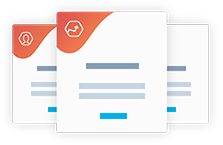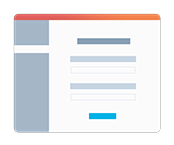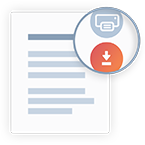


If you want to purchase products, you can create an official purchase order to send to the seller. This is most commonly used between companies, especially when the purchasing company has an account and specific terms of order with the selling company. A Purchase Order would indicate the list and quantity of items ordered and the agreed-upon price (if applicable). Each Purchase Order would have a PO number and delivery date.
A Purchase Order becomes legally binding only if the buyer accepts it and agrees to fulfill the order, which can be an acknowledgment of the document or the delivery of goods. The use of POs allows improved financial management and inventory tracking, faster delivery, and proper budgeting. Companies most commonly use it for larger purchases.
A Purchase Order is a document issued from a buyer to a supplier detailing the buyer's items at the agreed prices. Here are the steps in a typical Purchase Order process:
The buyer sends a Purchase Order to the supplier.
The supplier acknowledges it has received the Purchase Order and agrees to fulfill the order.
With the PO accepted, the supplier prepares the order for delivery.
The order is delivered with a Purchase Order or PO number for easy tracking.
The supplier sends an invoice to the buyer referencing the PO number.
The buyer pays for the invoice according to the terms offered in the Purchase Order.
Depending on the context and your preferred terminology, a Purchase Order may also be known as:
Buyer's order
PO
A buyer uses a Purchase Order to signal an intent to purchase the items listed, including the quantity and price. The advantage of using a PO is the buyer does not pay for the order in advance, only upon receipt of the order and on terms offered. On the part of the seller, they can book the order right away, and the Purchase Order is a legally binding proof of the account receivable.
Customized for you, by you
Create your own documents by answering our easy-to-understand questionnaires to get exactly what you need out of your Purchase Order.
Specific to your jurisdiction
Laws vary by location. Each document on 360 Legal Forms is customized for your state.
Fast and easy
All you have to do is fill out a simple questionnaire, print, and sign. No printer? No worries. You and other parties can even sign online.
It will defeat the purpose of a Purchase Order if you exclude, intentionally or unintentionally, things this document should cover. Once accepted by the supplier, it becomes a legal document and an account payable for the buyer.
Let 360 Legal Forms help with our extensive library of attorney-vetted legal forms. The process is fast and easy. All you have to do is fill out our easy-to-understand questionnaire. Once complete, simply download your form as a PDF or Word document from your secure online account.
To create your document, please provide:
Purchase Order Preparation: Select if the buyer or the seller prepares the PO. If you are the buyer, please also include a Purchase Order number.
Vendor Information: Full name and address of the vendor or seller. The name of the contact person may also be included.
Purchase Description: A list of the products in the PO, including the quantity and unit price of each line item.
Special Instructions: Additional instructions from the buyer to the vendor.
Sales Tax: The applicable sales tax in percentage and total.
Shipping: The cost of shipping, enter 0 or n/a if no shipping charge.
Shipping Information (optional): Specify the shipping method and shipment terms, if applicable.
Payment terms: Describe the terms offered to the buyer regarding payment for the ordered goods.
Delivery date: The date of goods delivery, if known.
FOB Origin: The assumption of risk transfers to the buyer as soon as the goods are handed over to the shipping company.
FOB Destination: The assumption of risk remains with the vendor until the buyer has chosen to receive the goods from the shipping company.
Freight Prepaid: The vendor pays for the shipping costs.
Freight Prepaid & Add: The vendor pays for the shipping costs and invoices the buyer.
Freight Collect: The shipping costs are collected from the buyer, which can be at delivery or after.
Freight Collect & Allowed: Same as the above, except the buyer, is to deduct the shipping costs from the seller's invoice.
A Purchase Order becomes legally binding after it's signed by both the seller and the buyer, indicating the terms agreed to.
After signing the Purchase Order, the document does not need to be notarized or filed with any governmental bodies. However, the seller may forward another form to the buyer to formally accept the PO. As is customary, both parties keep a copy of the PO in their business records.
There are four types of Purchase Orders as follows:
Standard purchase orders: This is used when a buyer knows what to purchase, when to pay for the order, and the delivery schedule.
Planned purchase orders: Businesses use planned purchase orders to indicate the items to order but with estimated quantities and delivery date.
Blanket purchase orders: Used by a company to place multiple orders from the same vendor at a discount.
Contract purchase orders: This document precedes the standard purchase order and outlines the items ordered, quantities, unit prices, and delivery schedule. The use of a contract purchase order elevates the legal protection afforded to both parties.
A purchase order is created by a company as a request for goods and services from a vendor. After receiving a purchase order, a vendor would deliver the goods and services ordered and asks for payment with an invoice.
Our exhaustive library of documents covers your personal, business, and real estate needs with all of your DIY legal forms.
Create professional documents for thousands of purposes.
Make unlimited documents and revisions. Sign online in seconds.
Our documents are vetted by lawyers and are applicable to all 50 states.